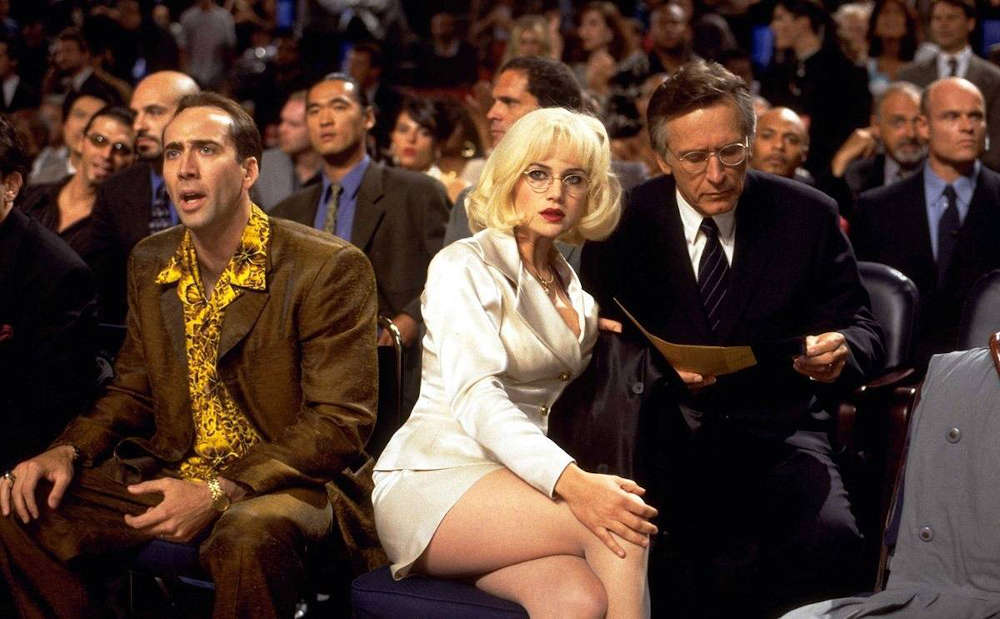Like Blow Out (1981) seventeen years prior, Brian De Palma opens Snake Eyes (1998) with a murder that unravels a web of deceit in the remaining runtime. We watch as Nicolas Cage’s eccentric Atlantic City homicide cop Rick Santoro holds court during “Fight Night,” wheeling and dealing in his flashy suit and shit-eating grin (a performance that predicts his bravura turn in Werner Herzog’s Bad Lieutenant: Port of Call New Orleans [2009]). Santoro then witnesses the assassination of a government official during the first round of a boxing match. Much of this sequence is rendered in an extended, twelve-minute steadicam shot, which is as technically impressive as it is panic inducing—something that De Palma clearly revels in.
Snake Eyes was De Palma’s follow-up to the biggest commercial success of his career, Mission: Impossible (1996), but rather than double down on effects-laden blockbusters, De Palma went back to his roots, turning in the type of twisty, meat-and-potatoes thriller at which he excels, and for which he arguably established the blueprint. The comparisons to Blow Out are easy to make: it’s a conspiracy thriller, revels in the minutiae of surveillance equipment, features a hard-to-like male protagonist. Yet outside of similar narrative beats and genre conventions, the two films operate on rather different wavelengths. Though the film feels smaller than Mission: Impossible —it largely takes place in a single location, with fewer expensive set-pieces—the financial reality is that Snake Eyes is much more of a studio production than Blow Out was, producing a De Palma that feels as split-personality as John Lithgow’s character in Raising Cain (1992).
With a body of work littered with capable contenders, the ultimate De Palma film could take various forms on any given day—the ribald, violent excesses of Scarface (1983); the lurid genre amalgam of Body Double (1984); the assured epic scope of Carlito’s Way (1993)—but no other film in the corpus seeks to bridge the old with the new the way Snake Eyes does. It features so many De Palma hallmarks that it begins to feel like a greatest hits record: split-screen sequences, first-person POV, ostentatious steadicam shots, operatic music cues by Ryuichi Sakamoto, two femme fatales. For most of its runtime, De Palma lets it live and breathe as a late-’90s riff on Blow Out, until the climax puts the seventy-five-million-dollar price tag on the screen for all to see. This isn’t the old De Palma anymore; it’s the mutant evolution of the De Palma film, gestating into something bigger and bolder, something that the 2.35:1 frame may very well be unable to contain. When Cage stretches his arms and bellows, “I was made for this sewer, baby, and I am the king!”, you will believe that De Palma is speaking through him.
Snake Eyes screens tonight, April 12, at Nitehawk Williamsburg on 35mm.



